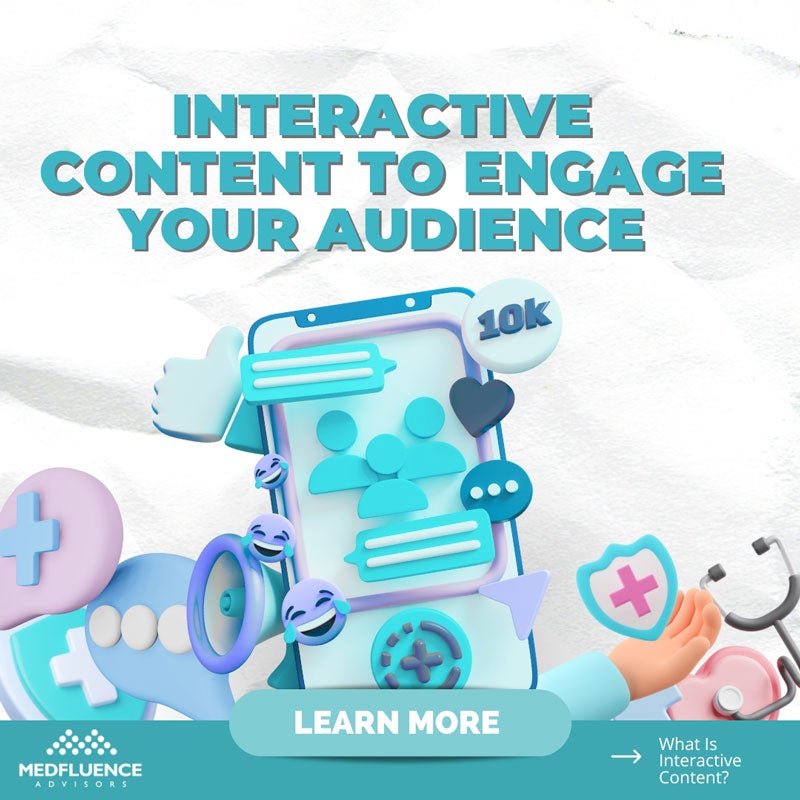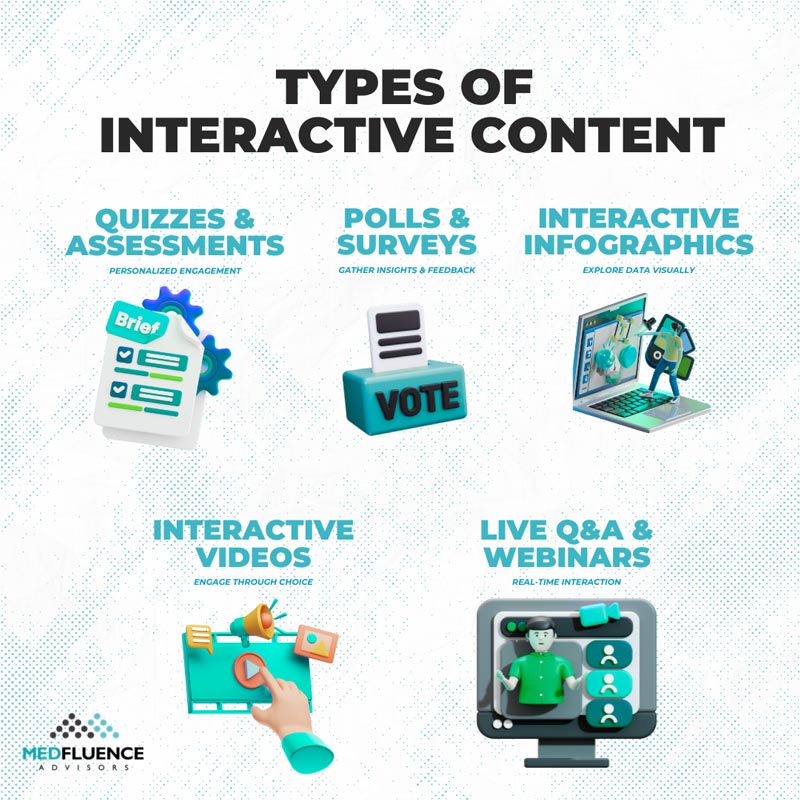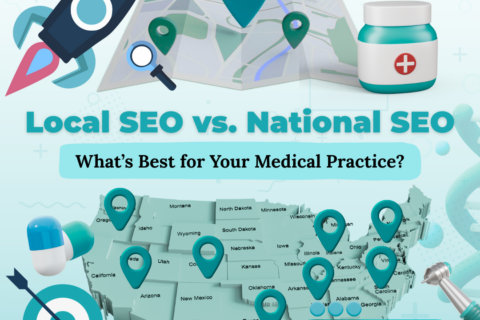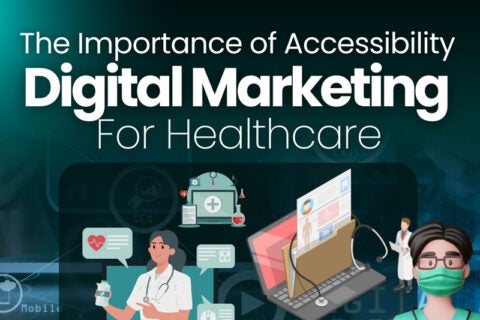How to Use Interactive Content to Engage Your Audience

Nowadays, static content feels like speaking through a wall when you could be having a meaningful conversation. Healthcare professionals and medical practices are discovering that traditional one-way communication isn’t enough to build lasting connections with patients and peers. Interactive content isn’t just a buzzword – it’s a powerful tool that transforms passive readers into engaged participants in their healthcare journey. By reimagining how we share medical knowledge and expertise, we can create experiences that resonate on a deeper level and drive meaningful engagement.
What Is Interactive Content?
Interactive content refers to digital media that requires active engagement from the user rather than just passive consumption. Instead of simply reading an article or watching a video, users are encouraged to participate in some way, whether by answering questions, clicking through dynamic elements, or inputting information to receive personalized results.
Common types of interactive content include quizzes, polls, surveys, calculators, interactive infographics, and clickable videos, all of which are designed to make the audience feel more involved while delivering useful and relevant information. Unlike traditional content, which is static and one-sided, interactive content creates a two-way experience that fosters deeper engagement and a stronger connection with the audience.
Why Use Interactive Content?
- Increases Engagement: Interactive content has the ability to capture a user’s attention more effectively than standard text-based content because it requires active participation. When people are given the opportunity to interact with what they’re consuming, whether through answering questions, clicking on different sections, or receiving immediate feedback, they are more likely to remain engaged for longer periods. This reduces bounce rates and increases the chances of users exploring other areas of your website or social media pages.
- Improves Learning: One of the biggest advantages of interactive content is its ability to break down complex topics into smaller, easier-to-understand pieces. When users are actively involved in the learning process, they retain information more effectively. For example, an interactive infographic that allows users to hover over different sections to reveal additional details can make a complicated subject more digestible. Similarly, quizzes that provide instant feedback help reinforce key points by offering explanations along the way. The more involved users are in consuming content, the more likely they are to remember and apply what they’ve learned.
- Encourages Sharing: People enjoy engaging with content that is fun, useful, or thought-provoking, and they are even more likely to share it with others when it involves an interactive element. Quizzes, for example, often prompt users to share their results with friends, while interactive tools that provide personalized outcomes can encourage social media discussions. By incorporating elements that make content both engaging and shareable, businesses and content creators can increase their reach and attract new audiences organically.
- Boosts SEO: Search engines prioritize content that keeps users on a webpage longer, and interactive elements naturally encourage visitors to stay engaged. When users spend more time interacting with a quiz, survey, or calculator, search engines recognize the page as valuable and relevant, which can lead to higher rankings in search results. Additionally, interactive content is more likely to earn backlinks from other websites, further improving SEO performance. By integrating interactive elements into a content strategy, businesses can enhance their online visibility while providing a better user experience.
Types of Interactive Content
Interactive content comes in many forms, each designed to encourage participation, increase engagement, and provide value to users. By incorporating these elements into your content strategy, you can create a more immersive experience for your audience while also gathering useful data that can help refine your messaging. Below are some of the most effective types of interactive content and how they can be used.
1. Quizzes and Assessments
Quizzes are an entertaining and interactive way to engage users while also providing them with personalized insights based on their answers. These assessments can range from lighthearted personality quizzes to more in-depth knowledge tests, depending on the target audience and purpose.
For example, a fitness brand might create a quiz titled, “What’s Your Ideal Workout Routine?” to help users identify exercise programs tailored to their fitness goals and preferences. A healthcare website could engage users with “How Much Do You Know About Sinus Health?” to educate them on symptoms and treatments for common sinus issues. Similarly, e-commerce businesses often use quizzes like “Which Product is Right for You?” to guide potential customers toward products best suited to their needs.
Quizzes not only keep visitors engaged but also provide businesses with valuable data on consumer interests and behavior, allowing for more targeted marketing strategies.
2. Polls and Surveys
Polls and surveys offer a simple yet effective way to engage audiences by directly asking for their opinions and feedback. These interactive elements can be used to gauge customer preferences, improve content strategies, and even influence product development.
For instance, a blog or online publication might post a poll asking, “Which of These Topics Would You Like to See Next?” to ensure that future content aligns with readers’ interests. Similarly, a digital marketing agency could use a survey to determine how its audience prefers to consume content by asking, “Do You Prefer Videos, Blogs, or Infographics?” Businesses can also gain insights into industry challenges by posing questions such as, “What’s Your Biggest Challenge in [Your Industry]?”
Gathering this kind of data allows brands to tailor their messaging, create more relevant content, and ultimately strengthen their connection with their audience.
3. Interactive Infographics
Traditional infographics are a visually appealing way to present complex data, but adding interactive elements can enhance their impact and make them even more engaging. Interactive infographics allow users to explore information at their own pace and in a more dynamic way. For example, a data-heavy chart could be designed so that users can hover over different sections to reveal additional details or explanations.
Clickable maps are another excellent example, enabling users to select specific regions and view localized insights or statistics. Additionally, slider-based infographics let users compare before-and-after data, such as changes in economic trends, climate conditions, or business growth over time. By making data exploration more intuitive and interactive, these infographics help audiences retain information more effectively while keeping them engaged.
4. Interactive Videos
Unlike traditional videos that require only passive viewing, interactive videos allow users to make choices, explore content sections, and engage with the material in a more meaningful way.
One popular format is the Choose Your Own Adventure Video, where users can select different storylines and see how their choices impact the outcome. This approach works well for storytelling-based content, training modules, and educational experiences. Another effective format is Clickable Tutorials, which enable viewers to jump directly to the sections they need instead of watching an entire video. This makes the content more user-friendly and efficient, especially for instructional videos.
Additionally, Q&A Style Videos provide an opportunity for audiences to submit questions and receive customized responses, making the experience feel more personalized and engaging. These interactive video formats can significantly boost retention rates and encourage deeper engagement with the content.
5. Live Q&A Sessions and Webinars
Live Q&A sessions and webinars offer an interactive, real-time experience where audiences can directly participate in discussions, ask questions, and provide feedback. Hosting these sessions fosters a sense of community and allows businesses to connect with their audiences on a more personal level.
For instance, an Industry Expert Interview can be structured so that viewers submit their most pressing questions, making the discussion more relevant and insightful. Product-based businesses can benefit from Live Product Demonstrations, where potential customers can see how a product works and ask about its features in real time. Educational institutions and thought leaders can host Webinars that include built-in polls, quizzes, and live Q&A segments, ensuring that the audience remains engaged throughout the session.
By incorporating these elements, businesses and content creators can create an interactive, value-driven experience that builds trust and encourages long-term engagement.

How to Implement Interactive Content Effectively
Adding interactive content to your marketing strategy can significantly boost audience engagement, but it needs to be executed correctly to achieve the best results. Below are some key strategies to ensure that your interactive content is both effective and user-friendly.
-
Keep It Simple and Relevant
While interactive content can range from basic to highly sophisticated, not every piece needs to be complex to be effective. Even something as straightforward as a quick poll or a short personality quiz can successfully capture your audience’s attention and encourage engagement. The key is to ensure that the content aligns with your audience’s interests and adds value in a way that feels natural.
For example, a beauty brand might create a quiz that helps users determine the best skincare routine for their skin type, while a fitness company could develop an assessment to suggest personalized workout plans. Choosing the right format for your brand and messaging ensures that your interactive content remains relevant and engaging rather than feeling forced or gimmicky.
-
Make It Mobile-Friendly
Since the majority of users now access digital content through their smartphones, it is essential to ensure that all interactive elements function smoothly on smaller screens. If a quiz, poll, calculator, or interactive infographic is difficult to navigate on a mobile device, users are more likely to abandon it before completing the experience.
To prevent this, opt for mobile-responsive designs that automatically adjust to different screen sizes and test the content on various devices to ensure usability. Consider elements such as button size, scrolling ease, and loading times to create a seamless and frustration-free mobile experience. A well-optimized mobile design not only improves engagement but also increases the likelihood of social sharing and repeat visits.
-
Encourage Social Sharing
One of the biggest advantages of interactive content is its shareability. When users engage with a fun or insightful experience—such as a quiz that reveals their personality type or a survey that sparks an interesting discussion—they are often inclined to share their results with their social media followers. To capitalize on this, integrate social media share buttons directly into your interactive content so users can effortlessly post their quiz scores, poll responses, or generated reports with just one click.
Encouraging social sharing not only extends your content’s reach beyond your immediate audience but also attracts new visitors who may be interested in exploring your brand. Additionally, interactive content that gains traction on social media can create organic buzz and increase brand awareness.
-
Use Data to Improve Future Content
One of the most valuable aspects of interactive content is the data it provides, offering insights into your audience’s preferences, behaviors, and pain points. For instance, analyzing quiz responses can help identify common concerns or interests within your target demographic, while survey results can highlight what type of content your audience finds most useful.
By carefully examining this data, you can refine your content strategy and create future materials that better align with your audience’s needs. If a quiz shows that a large percentage of users are struggling with a specific issue, you can develop blog posts, videos, or additional tools to address that topic. Using data-driven insights to shape your content ensures that your marketing efforts remain relevant, engaging, and effective.
-
Balance Fun with Value
While interactive content should be engaging and enjoyable, it should also provide real value to users. A lighthearted quiz titled “What Kind of Coffee Drinker Are You?” may be fun and entertaining, but if it does not offer any meaningful insights or useful takeaways, its impact is limited.
On the other hand, an interactive tool that helps users choose the right product, service, or solution based on their specific needs adds genuine value to their experience. Striking the right balance between entertainment and usefulness ensures that users not only enjoy engaging with your content but also see your brand as a helpful and trustworthy resource.
-
Test and Optimize
Not all interactive content will perform at the same level, so it is essential to track engagement metrics and make data-driven adjustments to optimize performance. Testing different formats—such as quizzes, surveys, calculators, and interactive infographics—allows you to determine which types resonate most with your audience.
Pay attention to key performance indicators such as completion rates, time spent on the content, and social shares. If a certain quiz or tool is not generating the expected level of engagement, consider modifying the design, simplifying the questions, or making the call-to-action more compelling. Continuous testing and optimization ensure that your interactive content remains effective and continues to drive meaningful interactions with your audience.

Beyond Clicks: Creating Conversations That Matter
Interactive content represents more than just a shift in communication strategy – it’s a fundamental reimagining of how we connect with our audience in the digital age. When we move beyond traditional content paradigms, we create opportunities for genuine dialogue and meaningful learning experiences.
Your audience isn’t just seeking information; they’re looking for ways to actively participate in their healthcare education and decision-making process. By embracing interactive elements, you’re not just sharing knowledge – you’re building a collaborative platform where engagement becomes natural and purposeful. The future of medical communication lies not in what we tell our audience, but in how we involve them in the conversation. Learn more from us!


